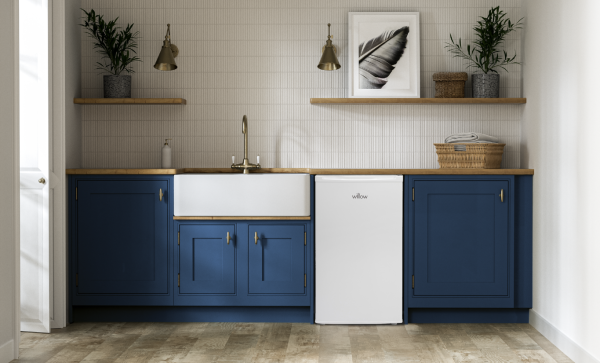A washing machine is an essential appliance in any home. It enables you to quickly and easily ensure your clothes are clean and hygienic. Without a washing machine, laundering clothes can be a time-consuming and laborious process. Over the years, washing machines have evolved to become more advanced and streamlined, with designs that reflect modern homes and priorities.
Whether you choose a freestanding or integrated washing machine, you need to be confident it can cope with the required workload. The best washing machine for your needs will depend on a range of circumstances. A single person is likely to need a machine with a smaller drum capacity than a large family that uses its appliance daily. Budget and available space, will also be factors.
Given washing machine prices can vary considerably, it is helpful to think about what you require from a washing machine.
A tumble dryer contains a number of key components that work together to efficiently dry your clothes in a relatively short period of time. Your wet clothes are placed in a drum that rotates to ensure even drying. A heating element generates hot air which then circulates around the drum to evaporate the moisture from your clothes and ensure they dry.
A ventilation system takes away the hot, moist air, often to an outside ventilation duct to speed up the drying process and to remove humidity from your home. A control panel allows you to select different drying programs, drying times, temperate and special settings such as eco-friendly or wool modes. A lint filter collects debris and lint ensuring your appliance keeps functioning efficiently.
Modern washing machines have several key components and functions that combine to clean clothes:
● Horizontal drum
The horizontal drum is at the centre of a front-loading washing machine. Clothes are loaded into the drum, which rotates during the wash cycle. This provides efficient cleaning while minimising wear and tear on garments.
● Door
The washing machine door is located on the front of the machine, allowing for easy access to the drum for loading and unloading.
● Gravity-assisted tumbling
As the drum turns, the clothes are agitated, with gravity playing a part in tumbling different items as the washing process takes place. This ensures a thorough cleaning process, allowing water and detergent to gently penetrate the fibres of your clothes.
● Water inlet and drainage
Washing machines require an inlet to allow water into the drum during the wash cycle, and drainage to ensure it empties efficiently.
● Energy-efficient design
Modern front-loading washing machines are highly energy efficient, using less water and electricity compared to older models.
A washing machine is considered an essential appliance in most homes, providing convenience and cleaning capability. It is time efficient, taking a fraction of time to clean clothes that would take hours to do thoroughly by hand. With programmable settings, washing machines are easy and convenient to use.
Load the washing machine, choose your setting, add detergent and fabric softener if required, and start the process. You can get on with other tasks while your washing machine works through the cleaning cycle.
Washing machines provide consistent, thorough cleaning for your clothes. The combination of water and detergent removes dirt, stains, and odours from clothing. With a range of settings, you can tailor the washing process to suit particular clothes and fabrics. Heavily soiled clothes can be cleaned intensively, while delicate items receive a gentler treatment.
Washing machines are also energy efficient, and are designed to reduce water and electricity consumption, particularly when compared to handwashing.
It’s important to think about where you want to locate a washing machine in your home for practical and functional reasons. If you have an integrated washing machine, then it will have an assigned position in your kitchen or utility room.
If it isn’t integrated, then there are several factors you will need to consider. First, your washing machine needs to be placed near a water source and drainage outlet to ensure water can be supplied, and wastewater removed, during the cleaning process.
Washing machines generate humid air, so proper ventilation is essential to prevent the growth of mould and mildew. For that reason, you should avoid placing the washing machine in a cramped, poorly-ventilated space. Ideally, an openable window should be nearby.
To reduce vibration and noise during operation, the washing machine should be sited on a level surface. Some washing machines have adjustable feet to ensure the machine is stable. When sited on a level surface, most modern washing machines have a quiet, unobtrusive operation.
It’s also important to consider the accessibility of your washing machine for easy loading (and unloading). The door should open and close freely, and tight corners and spaces should be avoided. If you have sufficient space, then a utility room or laundry area is ideal for your washing machine, dryer and other laundry-related equipment. This helps to make laundry easier and more convenient.
If you don’t have a suitable utility room, then a porch can be another option. In some instances, washing machines may be located on level ground in a garage where there is the necessary water supply and drainage.
In smaller properties, washing machines are frequently sighted in kitchens. This can be a practical option in most instances, because water supply and drainage are close by.
If space is limited, you may wish to consider a washer-dryer. These integrate washing and drying functions into a single machine, eliminating the need for a separate dryer.
While a washing machine is designed purely for washing clothes, a washer-dryer also features drying functions. Washer-dryers save space, but they may not offer the same degree of functionality when it comes to washing as a separate washing machine. These will often have more programmes and settings, allowing you to tailor your cleaning to suit your needs.
Washer-dryers may also have additional maintenance requirements because they contain a heating element for drying. This means you have more components in one machine that may fail or need replacing, meaning that should your dryer function fail, you may be unable to wash your clothes.
Washer-dryers can be an excellent choice if you only have room for one integrated appliance and are looking for a seamless washing and drying process. If you have the space, it makes sense to have a separate washing machine and dryer for the best results.






